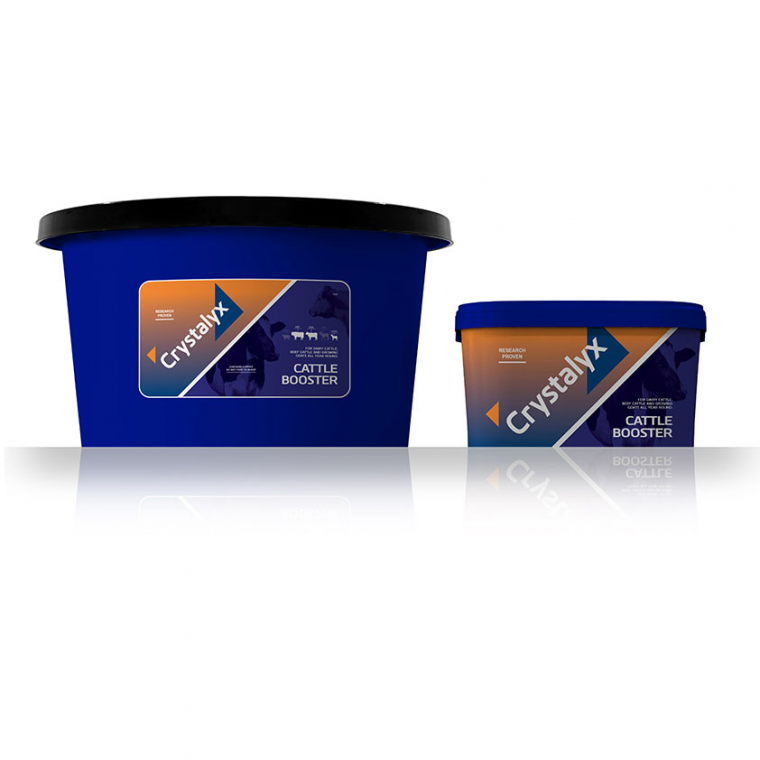Research carried out by Crystalyx, at Aberystwyth University, has illustrated the significant impact of feed utilisation on methane emissions for grazing heifers, with animals offered a supplementation block growing at over 15% faster and resulting in a reduction of methane emissions of almost 19%.
The study, which evaluated 11-month old Holstein Frisian heifers for a nine-week period in both spring and autumn grazing, set out to look at how the feed supplementation affected growth rates and methane production. The heifers, which initially weighed on average 240kg and started the study in the Autumn, were split into two groups; a control (grazing only) group and grazing plus ‘Cattle Booster’ supplementation. Due to low grass growth and availability during the Autumn study period, all heifers were supplemented with 1.25 kg sugar beet pulp nuts per head per day. All animals were weighed on a weekly basis and daily methane measurements were undertaken throughout weeks six and eight.
Explaining the implications of the research findings, Dr Cliff Lister, Caltech Crystalyx technical director, said: “There are two elements to this research that offer important benefits to UK farmers; increasing feed efficiency and reducing methane output.
“What we found was that heifers grew by an average of 138g/day more over the two study periods (which equates to an increase of 15.2%) if they had ab-lib access to a Cattle Booster block. When you then look at the methane emissions on a daily liveweight gain basis, they were reduced by 18.7% – a very significant reduction.
“Looking into why this happens, it is necessary to consider the rumen fermentation. The rumen microflora produce three key VFA’s (Volatile Fatty Acids); acetic acid, propionic acid and butyric acid during the fermentation and breakdown of feed materials.
“The most efficient fermentation pathway is obtained through propionic acid production, therefore the results of this study suggest that supplementation with the Cattle Booster product produces a higher proportion of propionic acid in the rumen. This gives the animal the ability to convert feed into liveweight gain more efficiently. This results in better feed utilisation, hence higher daily live weight gains. In fact, we can show that heifers will be ready for breeding 40 days earlier than if they were fed grass alone; presenting a considerable financial benefit for dairy and beef enterprises.
“As farmers continue to look at ways in which to improve efficiencies, this research offers some valuable conclusions. Nutritional efficiencies are a major factor in livestock farm profitability and farmers should look to use proven, effective products to improve the bottom line. If these products also result in a significant environmental benefit, as this study clearly demonstrates with Cattle Booster, it is a highly advisable route to help both improve business performance and reduce methane emissions.
“Environmental responsibility is becoming, and I believe will continue to be, an increasing issue with consumers, and as the industry looks at ways to market products in future, ways in which we can show efforts to reduce our impact on the environment need to be taken very seriously.




